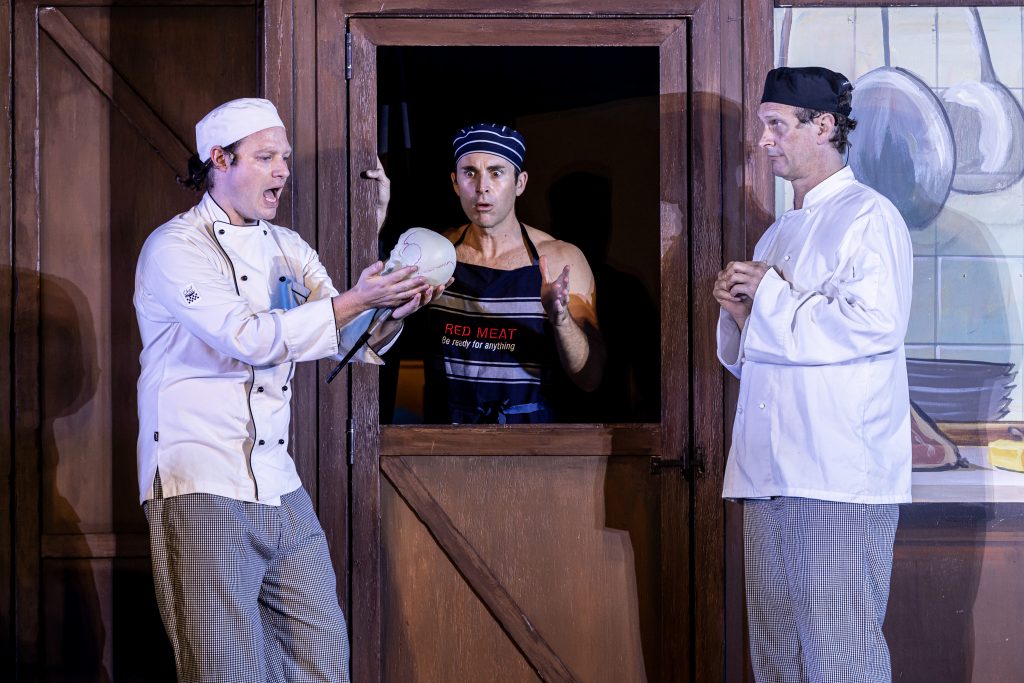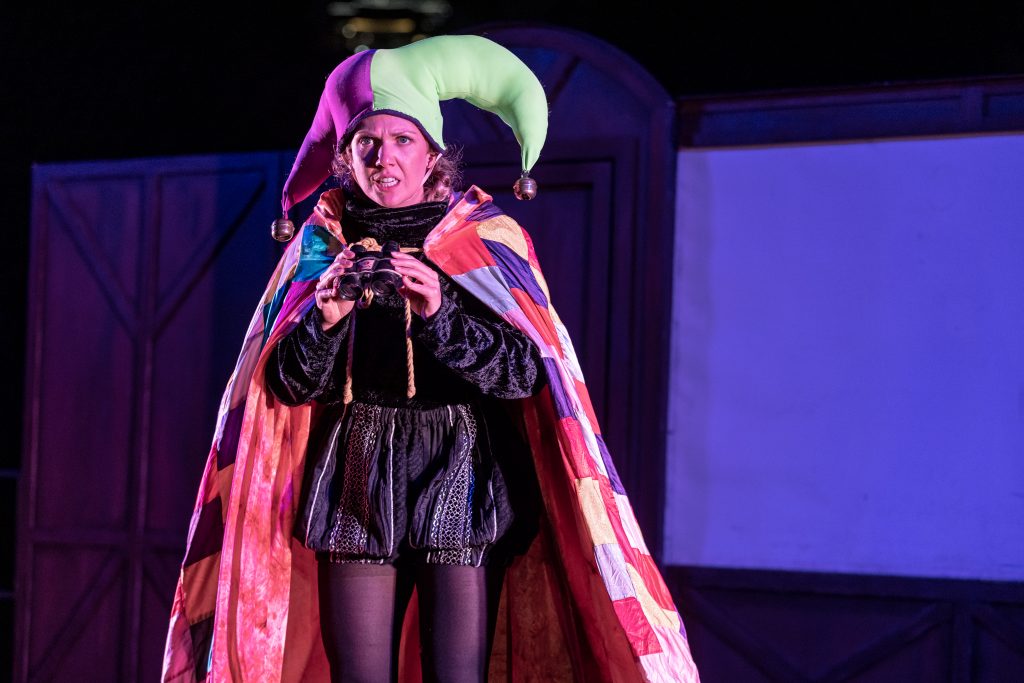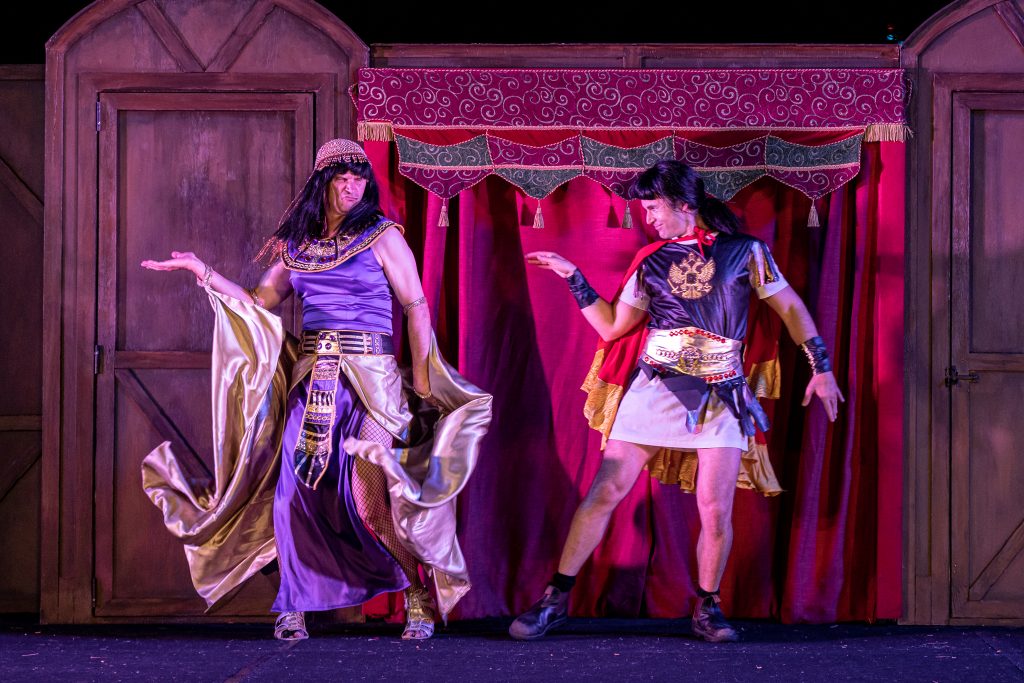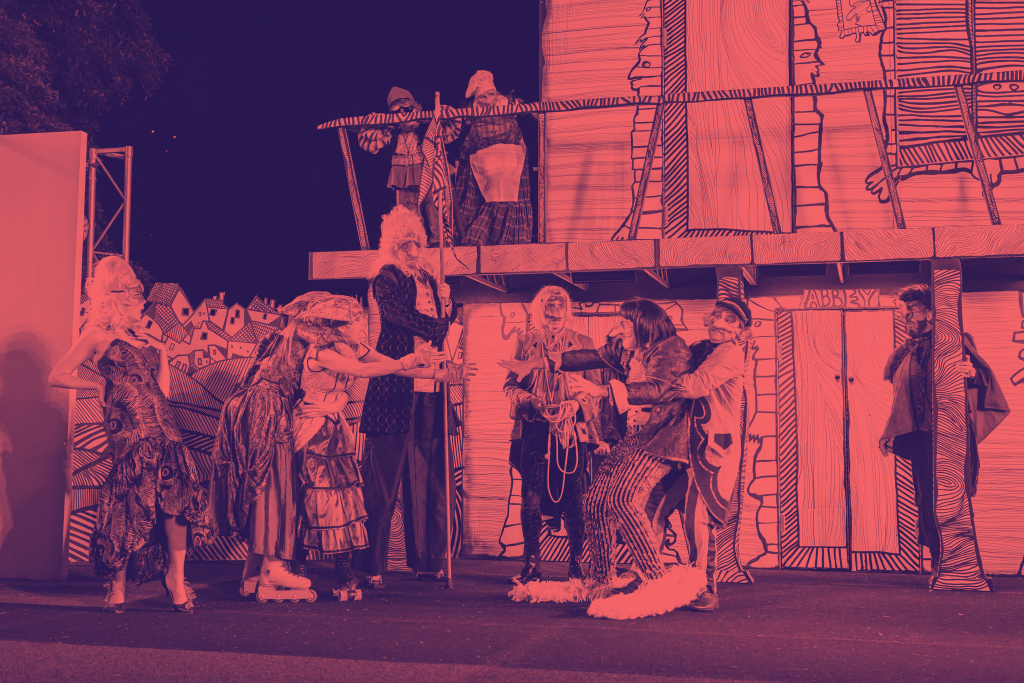
‘A Midsummer Mechanical’s Dream’ // Australian Shakespeare Company
‘A Midsummer Mechanical’s Dream’ was Pythonesque.
When one thinks of William Shakespeare, the first thoughts that generally come to mind are wistful sonnets and thematically rich plays. The Bard’s stamp upon the landscape of English literature and theatre is unquestionable. However, have you ever thought about Shakespeare’s work as being a basis for surrealist, slapstick comedy? If you answered ‘no’, do not be concerned, as not many of us have. One group that has, though, is the Australian Shakespeare Company (ASC), and the result does not disappoint.
Following on from a highly successful 2021 season of ‘A Midsummer Night’s Dream’, the ASC decided to revamp the classic tale for this year’s ‘Shakespeare Under the Stars’. All the familiar aspects of ‘Shakespeare Under the Stars’ are here. Families and friends scatter picnic blankets and delicious spreads across Melbourne’s Royal Botanic Gardens’ South Lawn. As the sun sets, a cool, early autumn breeze picks up slightly. Fairy lights twinkle around the lawn perimeter, most fitting for a night of whimsical Shakespeare. However, that is where the familiarity ends – and the hilarity begins.
Unlike the previous year’s production, ‘A Midsummer Mechanical’s Dream’ is not a direct adaptation of Shakespeare’s beloved 16th century comedy. Instead, ASC utilises one of the subplots of the original play as the basis for their latest theatrical outing. Focusing upon a group of amateur Athenian thespians, known as the Mechanicals, ‘A Midsummer Mechanical’s Dream’ presents a humorous imagining of the workshopping process for their upcoming play ‘Pyramus and Thisbe’ which is to be debuted at the Duke’s wedding. However, the troupe’s faith in their impassioned director, Peter Quince, is dwindling. In an effort to find the right play to present at the Duke and Duchess’ wedding, the Mechanicals perform several abridged plays penned by a certain ‘Uncle Bill’ in a myriad of styles (traditional theatre, opera, ballet, puppetry, and even hip hop).
One thing ASC truly demonstrates with ‘A Midsummer Mechanical’s Dream’ is the unbridled adaptability of Shakespeare. The only limits upon the performance are how far a creative’s imagination can go. The production touches upon several of Shakespeare’s most notable plays including ‘Macbeth’, ‘Hamlet’, ‘King Lear’, ‘Othello’, ‘Romeo and Juliet’, ‘Antony and Cleopatra’, and ‘Richard III’. The variance of the production’s content is matched by the methods of presentation with the likes of traditional theatre, opera, ballet, puppetry, and even hip-hop recital being utilised to tell the Bard’s works. Creativity flows freely throughout the production, amounting to a highly rambunctious ode to both the presentation of live theatre as well as the playwright himself.
Such versatile storytelling methods require adaptive production design. Luckily, Production and Stage Managers Peter Amesbury and Claire Duncan rise to the occasion. The stage itself is deceptively bare, with a makeshift brown building being its sole occupant for much of the show. Audiences come to appreciate the quiet brilliance of this, however, as the building transforms into a Scottish castle, a chef’s kitchen, and an Egyptian temple through subtle alterations. Reminiscent of a children’s pop-up book, flaps are lifted, and doors and windows are uncovered, transporting audiences to a new Shakespearean locale every few minutes. All this is achieved while also keeping to the Mechanical’s satirical tone. Amesbury and Duncan wholeheartedly embrace the silly tone of ‘A Midsummer Mechanical’s Dream’ through their versatile, and at times exquisitely crude, set design. A personal favourite is the silhouetted screen used during the ‘Romeo and Juliet’ sequence, whereby the characters’ shadows engage in a series of preposterous scenarios (think Mel Brooks’ ‘Robin Hood: Men in Tights’ meets Shakespeare).
Much of the humour within ‘A Midsummer Mechanical’s Dream’ can be attributed to the outrageously comical costumes. Designer and Assistant, Karla Erenbots and Kaspa Elston respectively, forgo the traditional Shakespearean garb for more basic costuming. This decision proves to be clever for two reasons – adding an extra splash of hilarity to the mad mix, as well as allowing the performers to make quick and regular costume changes. Erenbots and Elston keep the costumes akin to the fare found in the average op shop, heightening the satirical, ‘amateur theatre’ aesthetic. No better is this exemplified than during the ‘Macbeth’ sequence whereby Andrew Bongiorno’s Bottom (how appropriate!), in character as Banquo, wears nothing more than a Scottish apron, tam hat, and a very ‘cheeky’ pair of underwear.
‘A Midsummer Mechanical’s Dream’ is expertly tailored to tickle the audience’s collective funny bone through the direction, choreography, and sound design. Under the watchful eye of ASC’s Artistic Director Glenn Elston, ‘A Midsummer Mechanical’s Dream’ pays loving homage to the company’s eponymous playwright, while also leaving the audience in stitches. Elston demonstrates a deep-seeded appreciation for theatre in all its forms and styles and embraces the opportunity to dabble in them here (albeit comically). Buoying Elston’s direction is Sue-Ellen Shook’s choreography, Paul Norton’s musical direction, and Joshua Sunderland’s sound operation. All work cohesively to elevate the slapstick comedy onstage into the realm of Monty Pythonesque hysterics. Whether it’s opening Egyptian doors to techno music or doing the Can-Can just because, the interplay of music, sound, and movement in ‘A Midsummer Mechanical’s Dream’ is nothing short of insanely fun.
In a production called ‘A Midsummer Mechanical’s Dream’, it should come as no surprise that the Mechanicals themselves are the true stars of the show. With each performer assuming several Shakespearean roles throughout the performance, it is important to remember that they are performing as a Mechanical first and foremost. Each performer rises to the occasion of putting on numerous plays within a single play – a particularly challenging endeavour for which they each accomplish to a high standard.
Kevin Hopkins is delectably flamboyant as the begrudged director Peter Quince, embracing every ludicrous scenario with fervour. Hugh Sexton’s Robin and Madeleine Somers’ Snug are delightfully simple-minded and malleable. Andrew Bongiorno, playing the aforementioned Bottom, brings a modern spirit to the production, bridging the gap between Shakespeare’s text and social commentary. Tony Rive and Scott Jackson are standouts as Flute and Snout, respectively. Their shared commitment to comedic timing and movement, particularly during the ‘Romeo and Juliet’ sequence, are definitive highlights.
ASC’s ‘Shakespeare Under the Stars’ is a mainstay in Melbourne’s theatre landscape. While the company is most prominently associated with productions of the Bard’s works verbatim, ‘A Midsummer Mechanical’s Dream’ proves that they can also embrace the lighter, sillier side of classic literature. If you are a fan of Shakespearean artistry, versatile theatre forms, or comedy akin to Monty Python or ‘The Chaser’s War on Everything’, then the Mechanicals have just the show for you!
‘Peter Quince Presents ‘A Midsummer Mechanical’s Dream’’ performs as part of the Australian Shakespeare Company’s ‘Shakespeare Under the Stars’ season until Saturday, 12 March 2022 at Melbourne’s Royal Botanic Gardens. For more information, or to purchase tickets, visit the ASC’s website.
Photography by Ben Fon – Fon Photography









